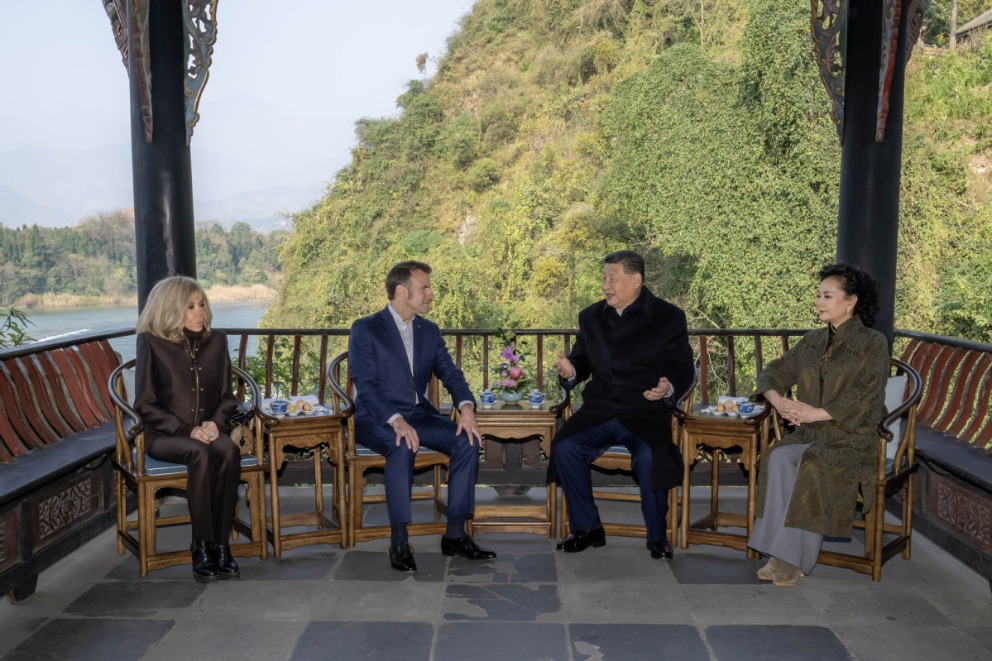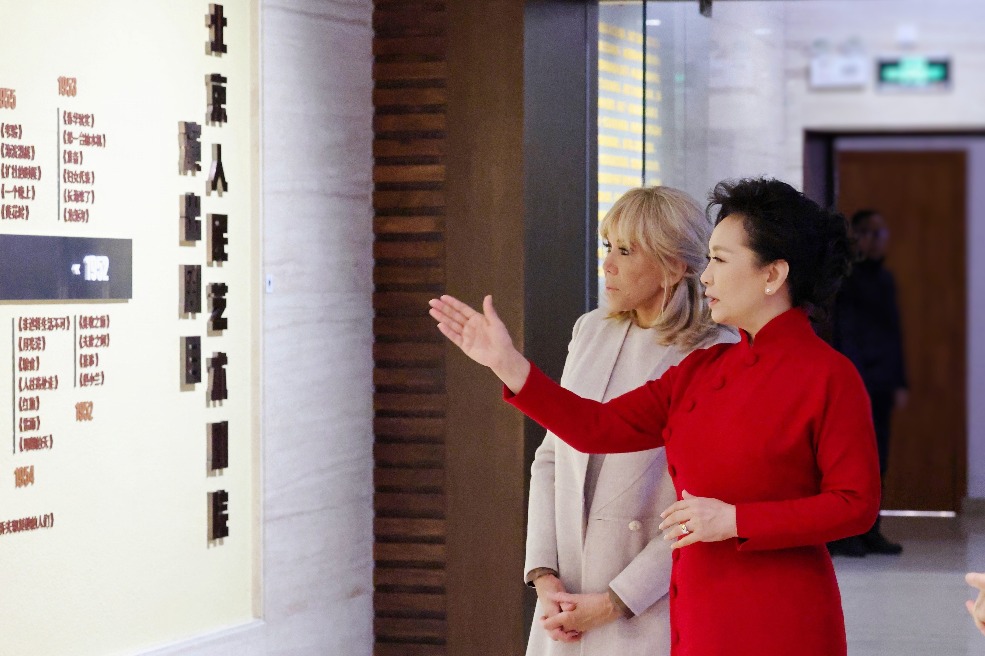Pouring forth from the desert
By Li Yingxue | China Daily | Updated: 2019-10-18 08:31

The chateau was under construction when Moser first visited Ningxia in 2011. But the grapes impressed him.
"This is why I fell in love with this country-because this is the smallest cabernet sauvignon that I've worked with in my life," he says.
"When you see the small berries, you immediately know you will make good wine. The smaller the berry, the better. Also, in Ningxia, the days are warm, and the nights are cool, which can keep the freshness of the grapes."
Ningxia's desert climate causes the fruit to grow thick skins to prevent evaporation. And tannins and taste are extracted from the skin, he explains.
The vines are buried before winter to protect them.
"On the other hand, because you bury them, which gives them four months of uninterrupted sleep, they end up growing faster the next spring," Moser says.
Ningxia's grape harvests usually start before the Mid-Autumn Festival.
The first change Moser introduced when he started at the chateau was to delay the harvest, which elevated the wines' quality.
"It was a simple idea, but we've been making better wines since 2015," he says.
"We postponed the harvest time by 10 days. When I see the sugar is right, the grapes taste great, and when the seeds are brown, not green, it's about time to harvest."
Moser believes the seeds' color and flavor are crucial. He chews them to see if they taste nutty enough for harvest.
Ningxia's wines used to be about 12 percent alcohol content, but delaying the harvest enabled the seeds to turn brown and the alcohol content to increase to around 14 percent.
It wasn't easy to persuade others to wait at first. If Moser was wrong, the whole year's work would be ruined.
Serendipitously, two rains arrived around the normal harvest time, which naturally stopped workers from gathering the grapes. And, in the end, the fruit was better than before.
Moser visits the chateau several times a year, including just before every harvest.
Before he arrives, his colleagues send him photos of seeds and other information, including sugar concentrations, on a weekly basis.
"Winemaking is not just one person. It's a teamwork," says Moser, who works with a well-trained all-Chinese team.
"All I have to do is bring my international experience to the chateau. We only produce and bottle what I believe is right for the global market."
About half of the chateau's wine is exported to over 40 countries and regions, including the United Kingdom, Italy, Germany, Canada and Singapore.
"Ten years ago, when I said I want to bring our wines from China to the world, nobody was listening," he says.
"Now, our wines are sold in the finest hotels and restaurants in London, such as the Mandarin Oriental and Four Seasons. We want to make the best wine of China, and we need also to make wines belonging in the company of the world's finest.
"Today, I can probably say we have achieved a lot of these goals already, because when I do a tasting in Europe, I always have a bottle of nice French wine or even Argentinean wine on the table to prove the point that we have the right to be on the same table."
Moser also wants to bring Chinese wines, including other companies', to the global market.
"We have a long way to go because we are at the beginning," he says.
"But we have good base."
























